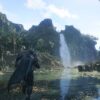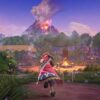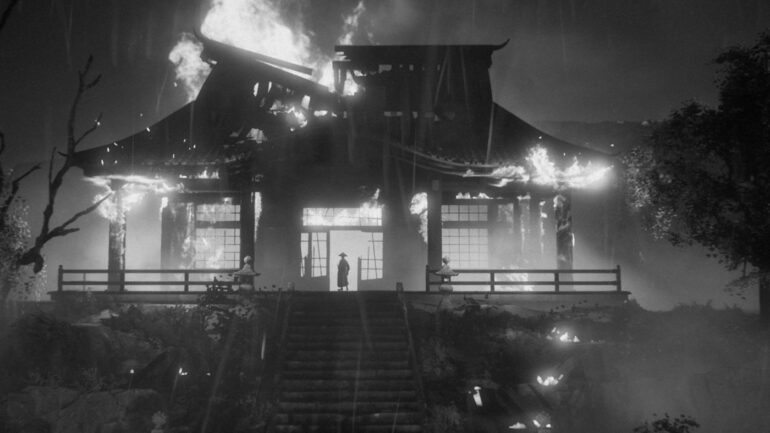Upcoming indie game Trek to Yomi is one that’s certainly on a lot of radars. Its dedication to authenticity and capturing the feeling of classic samurai cinema is second-to-none, but there’s a lot more to the game than just its pretty face.
Developer Flying Wild Hog has poured years and countless hours into assuring Trek to Yomi is as exhaustively authentic as possible.
In our discussion with Trek to Yomi’s producer Katarzyna Szymczak-Shalska, we also chatted about whether the game might receive a photo mode, if we’ll ever see a colourised cut of the game, and door hinges of all things. The game releases on May 5th for PS4, PS5, Xbox Series X|S, Xbox One and PC.
It seems a grueling effort has gone into making Trek to Yomi authentic, including sourcing incredibly rare instruments for the score. Ballpark value of the rarest instrument used?
Syzmczak-Shalska: We intended to harmonize the music with the visuals and story. A contemporary, more up-to-date theme would’ve distorted the reception of the game. We started looking for composers that would fit the vibe of the game and guarantee historical accuracy sound-wise. Needless to say, we found them!
Composers Cody Johnson and Yoko Honda, who has actual samurai heritage, used sole Japanese instruments from the Edo period. In part, the score was based on the sounds of Gagaku, an ancient form of Japanese imperial court music. Gagaku used techniques of counterpoint, which is multiple melodies sounding together, hundreds of years before European composers.
In terms of ballpark value, we don’t want to pick favorites. All the instruments used in the score were priceless, due to the fact that they helped build the unique atmosphere in Trek to Yomi.
For anyone unfamiliar with Akira Kurosawa, the main source of inspiration behind Trek to Yomi, which of his works would you each consider to be essential viewing?
S-S: The first choice is a no-brainer, “Seven Samurai”. I mean, it’s such a classic that it just doesn’t get any better. It’s Kurosawa’s magnum opus. The directing, montage lighting, frames, and lighting. It’s all epic! He laid the foundation for contemporary action movies.
The next movie from is “Throne of Blood”, Kurosawa’s take on the Shakespearean classic “Macbeth”. I mean Toshiro Mifune reached straight-up god-tier acting in the role! To be honest, if one likes action movies, you can’t go wrong with Kurosawa’s films.
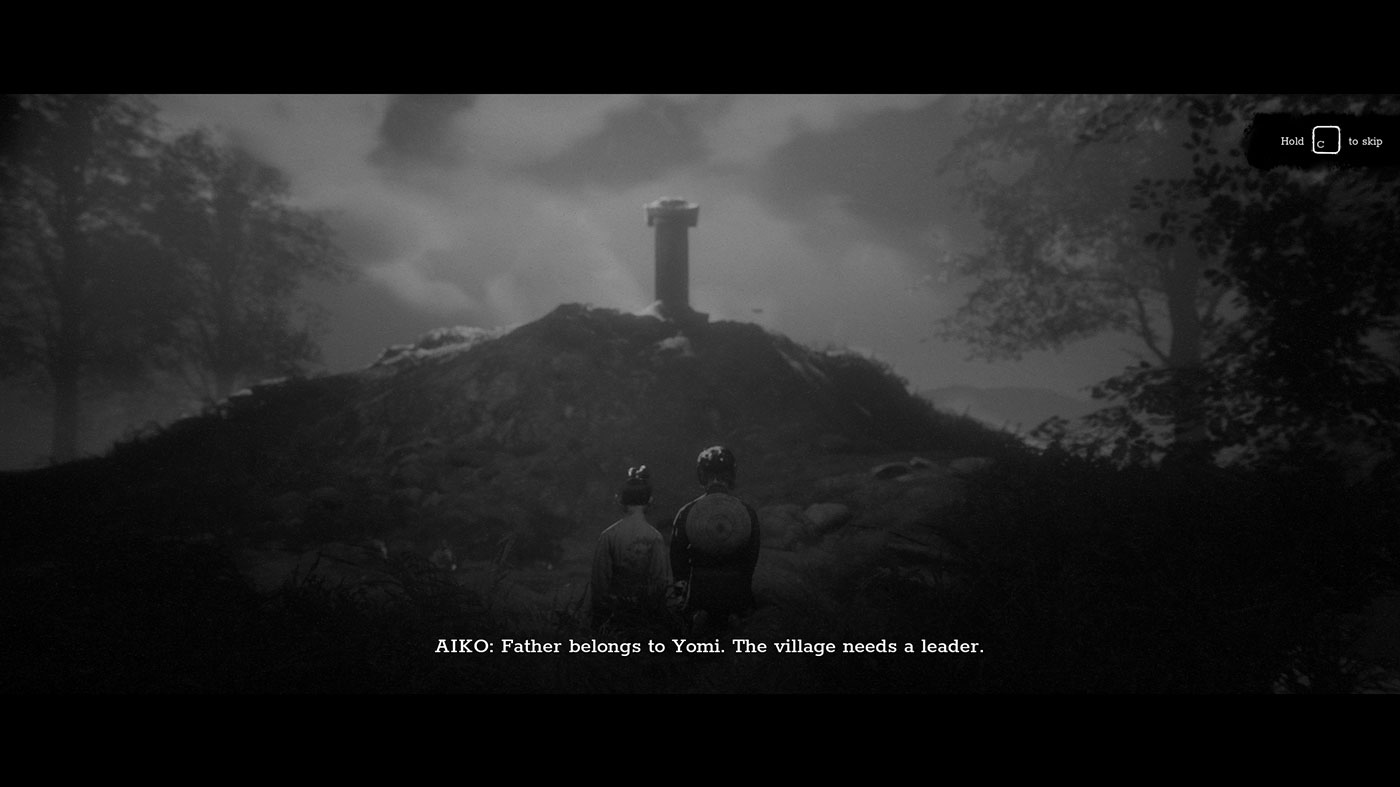
Devolver seems to have had a good strike rate with Xbox Game Pass, how has the move to the service benefited Trek to Yomi and the team?
S-S: Trek to Yomi is a fresh IP. Right now, it needs exposure and the best way to do so is essential via Xbox Game Pass.
Some of my favorite games are considered short, and Trek to Yomi allegedly being about five hours long is music to my ears. While I’m sure the journey itself will be worth it, in what ways has the team ensured there’ll be a bit of replay value?
S-S: Trek to Yomi can be beaten within five-to-six hours and beating the game gives you access to a new difficulty mode. It’s basically “one-hit, one-kill”, in other words, a game changer!
The game also has four different endings so there’s a lot of space for replayability in Trek to Yomi.
After obviously working on Shadow Warrior for so long, was Flying Wild Hog the natural choice to pivot to a project so steeped in Japanese culture and its mythologies?
S-S: Trek to Yomi was produced by the Rzeszow team. Our team only provided limited assistance on Shadow Warrior 3. That being said, we’re still Flying Wild Hog, so fast-paced, action-packed games are in our DNA.
Japanese culture was something relatively new to us, so we had to do a deep dive into it and promptly acquaint ourselves with it. I guess you can say that something like Trek to Yomi was bound to happen either way.
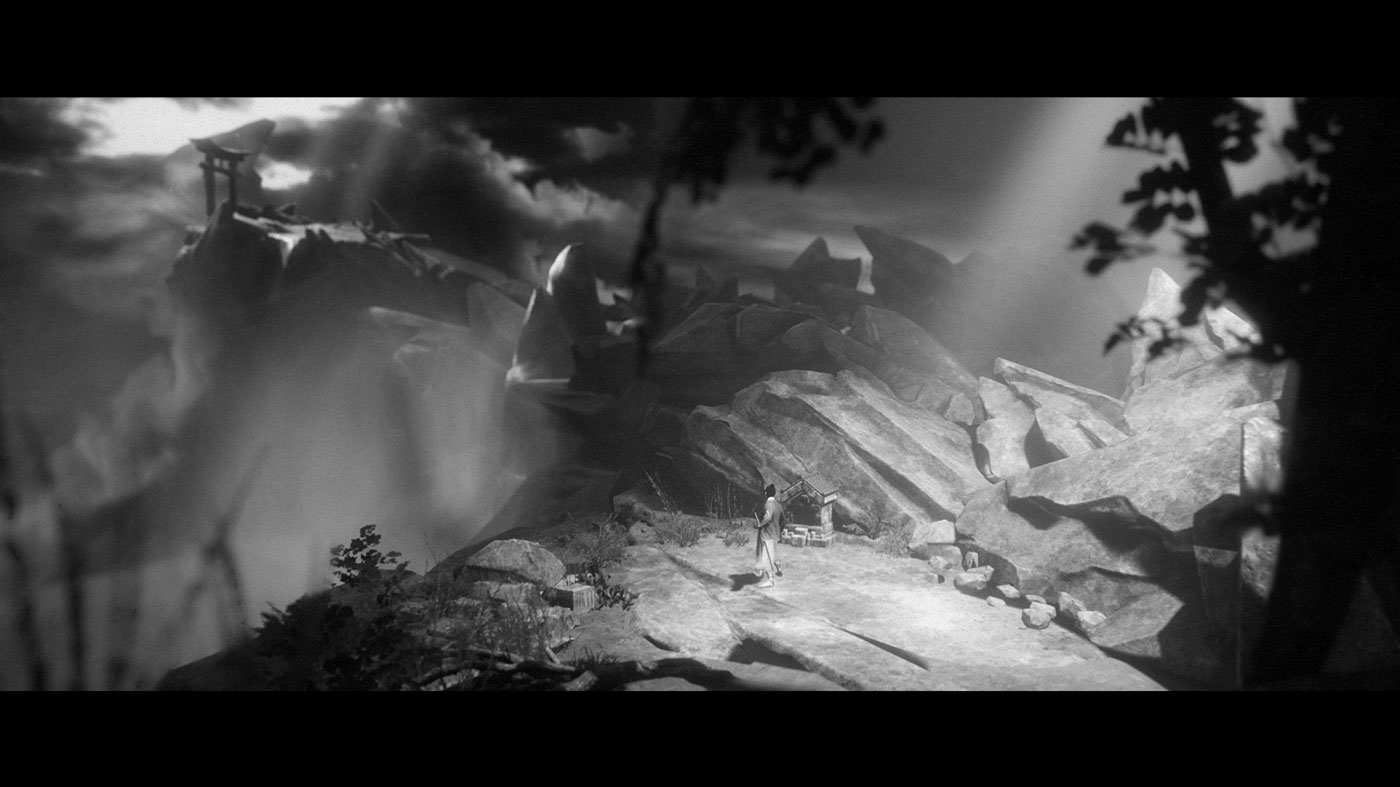
I feel like a lot of Trek to Yomi’s more fantastical imagery—its supernatural elements and so forth—has been kept largely under wraps. Just how weird does the game get?
S-S: Trek to Yomi gets weird, especially in the Yomi part of the trek. See what I did there? In all seriousness, you’ll get to see a lot of weird, fantasy settings and creatures later on in the adventure.
As someone who spent some time with the first hour, I did notice the combat begin to wane. Granted, I’d only primarily used the katana, but how are things kept interesting throughout the rest of Hiroki’s journey to hell and back?
S-S: Hiroki acquires lots of skills during his trek.
It’s a constant adapting to new enemies and learning how to defeat them. On top of that, you’ll get to use skills that weren’t available to Hiroki in the early stages of the game. Yomi is the true crucible where we test your ability to use those skills with some pretty terrifying foes. That’s why the first part may seem a bit serene, it’s all about letting the player get used to the mechanics and skills.
Although the presentation is sumptuous, and to release it in any other form would be a disservice to how pretty and scenic Trek to Yomi is, is there an in-color version of it somewhere?
S-S: It was our intention from the very beginning to have Trek to Yomi in black and white. We had to take a lot of measures to make sure that the game looks great in this sort of setting. Turning on colors would render all of our previous efforts useless.
Is it something that can just be toggled, for lack of a better term?
S-S: No toggling, black and white is the way to go and we intend to keep it that way.
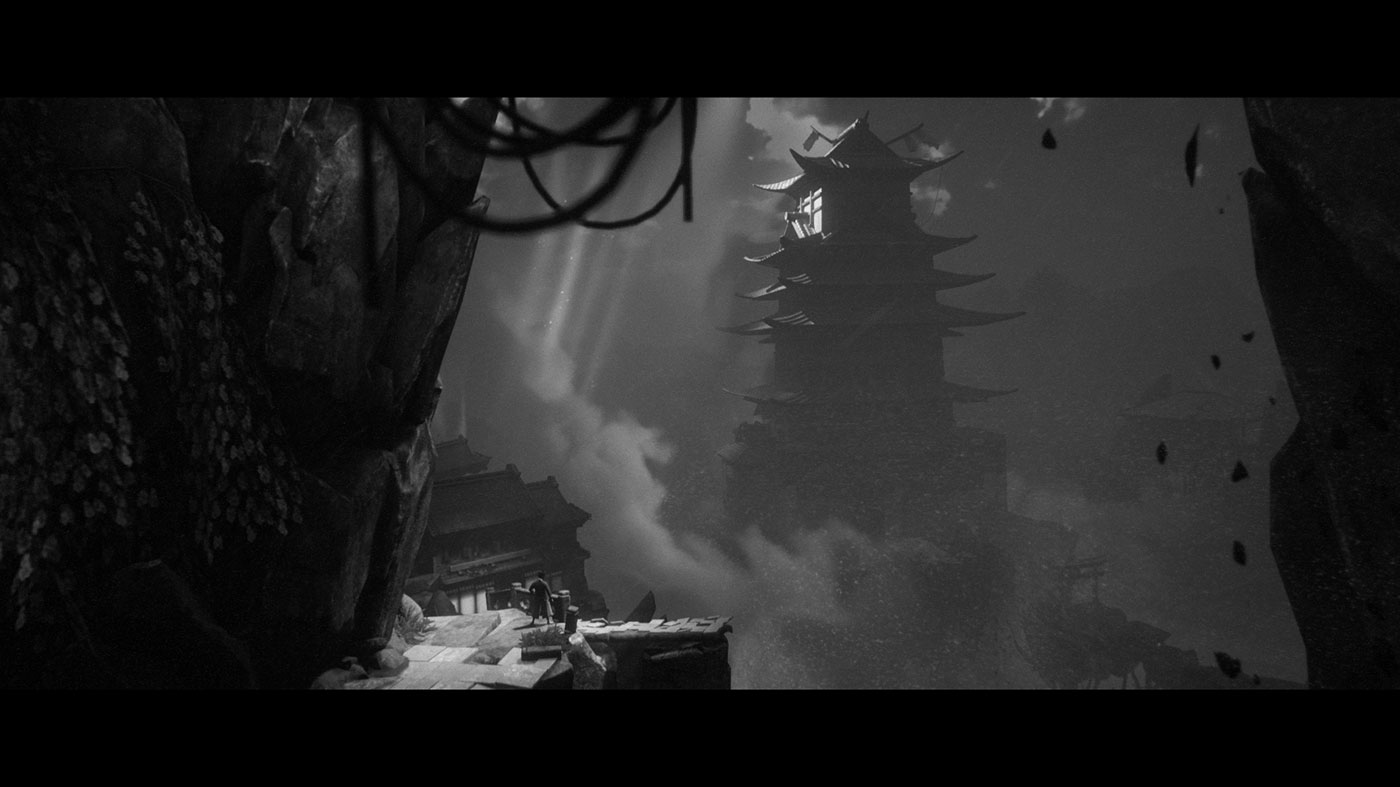
And what about any plans to integrate a photo mode post-launch?
S-S: Since the scenes are shown from a carefully-designed angle, introducing photo mode will not be available. However, the game is going to be available in 4K so we implore everyone to take magnificent screenshots.
I know I’ve got a folder of screenshots already. If the game exceeds expectations and there’s demand for it, do you think Trek to Yomi’s world is ripe for expansion or do you feel like it’s a one-and-done story?
S-S: The story told in Trek to Yomi is a shut case. That being said, the setting is so rich that, who knows, maybe we’ll delve into it again later on.
As a 2.5D platformer, Trek to Yomi feels a bit like what a modern take on classic Prince of Persia could be. Did you draw inspiration from anything to build out the game’s systems?
S-S: Prince of Persia is a great game and still holds up to this day. Trek to Yomi doesn’t share Prince of Persia’s arcade features for we believed that would spoil the immersion. We took out a bit from both worlds. Hiroki can move in all three dimensions, but combat is conducted in a 2.5D fashion. It sounds a bit quirky on paper but trust us, it’s fun!
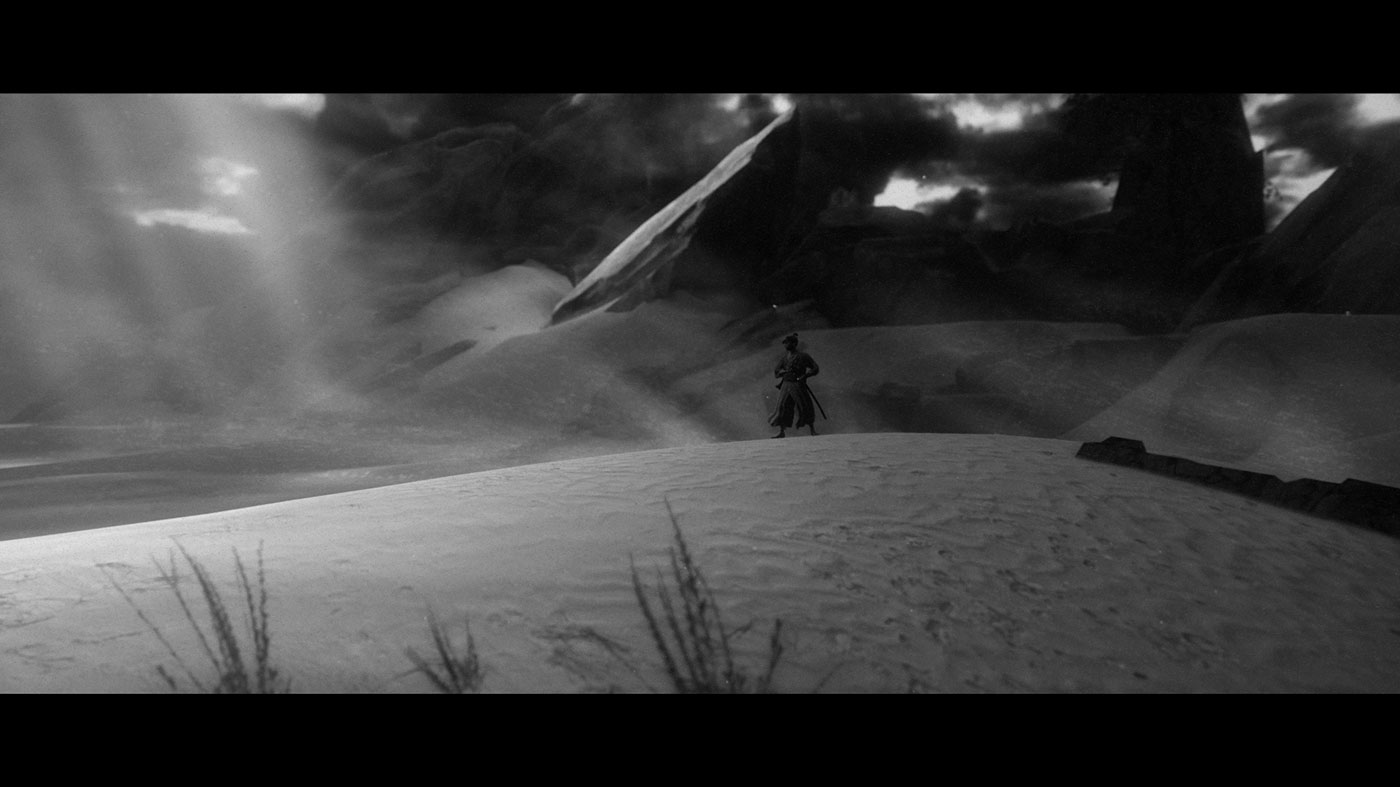
Like all things, gaming trends do come and go. We’ve had war, zombies, post-apocalypse, battle royales. Right now, it feels like the feudal Japan era is in full swing. What do you think we’ll see next?
S-S: I think that every good idea can be transformed into a popular game, regardless of the dominant trends at the time. Trek to Yomi, as an idea, came to life before Ghost of Tsushima.
If you ask me what would I like to play? Something with dinosaurs, maybe another Turok installment?
Turok? Yes, please. Keeping everything straight and authentic must be tough, what are some of the funnier anachronisms that almost made it through to launch?
S-S: Japanese culture isn’t something obvious to us, but one of the things we had to get rid of after consulting it with specialists was… door hinges. Turns out, that wasn’t a thing in Edo period Japan. We have a similar encounter with fireplaces within households. It was a very educating experience, not going to lie.
Thanks for your time.
Trek to Yomi releases on May 5th for PS4, PS5, Xbox Series X|S, Xbox One and PC.
